Next year’s northern people are Sami from the Kola Peninsula. As Sami, we are one people with settlement areas in four states: Norway, Sweden, Finland, and Russia. At Riddu Riđđu in 2018, Kildin and Skolt Sami will teach our audience more about the Sami history, artistic expressions, traditions, and knowledge in the east.
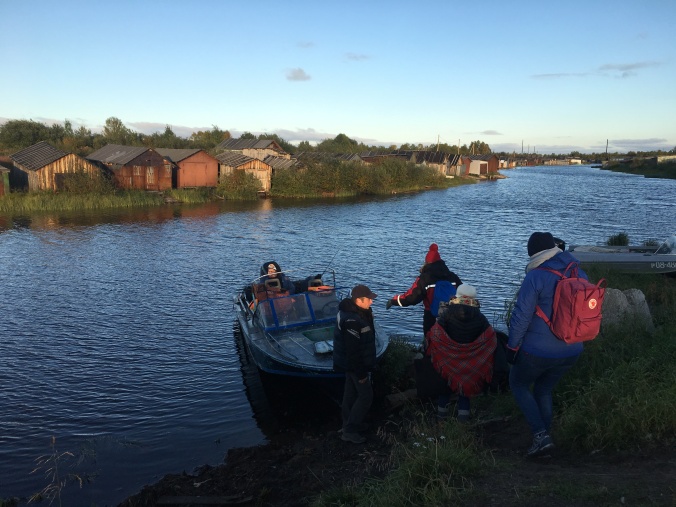
That’s why three excited Riddu people jumped on the plane to Kirkenes a few weeks ago, ready for a weekend on the Russian side of Sápmi (Karoline, Stian and Kristin).
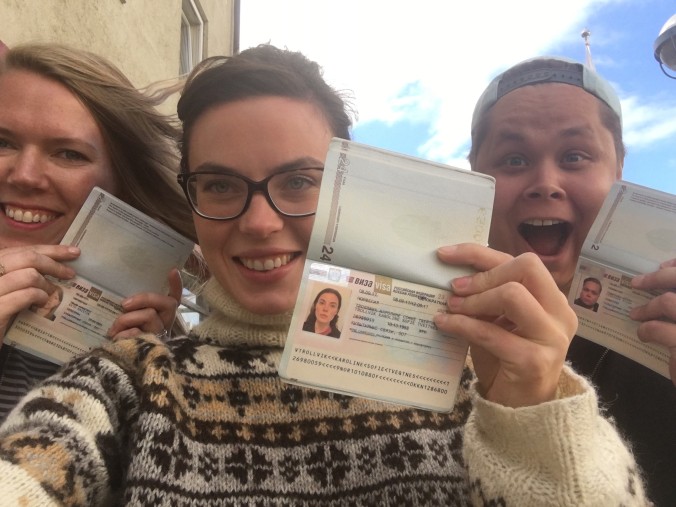
Lots of gratitude to the Barents Secretariat, who managed to get us visa last minute!
When our coordinator tipped us of a big Sami happening in the Murmansk region this weekend, we cleared our calendars, arranged a visa at record speed and left for the east. After a nice chat and guided tour of the Barents Secretariat, we headed for Murmansk. Both we and the car made it safely across the border and soon we flew over the Russian tundra. While on the road, we also visited the Valley of Fame monuments that honors the soldiers who fell at the Murmansk front during World War II. Later we were told an important part of the story, which is that the Sami, Komi and Nenets were crucial pathfinders and used their reindeers to carry food, medicine, war gear and other necessities to the soldiers at the front.
Finally in Murmansk, we spent the evening reflecting on the construction of national borders, the Murmansk front and the role of eastern Sápmi areas during World War II, before we finished the first stage of the expedition at a Mexican restaurant.
The next day we met Tatiana and Natalia, our guides for the weekend. Natalia is a Skolt Sami linguist raised in Murmansk City, and will be our coordinator for next year’s Northern People Of the Year-delegation. Tatiana is Kildin Sami and contributes with expertise and knowledge, after many years of collaboration with Riddu Riđđu and with international Indigenous Peoples’ cooperation. Together we headed for Loparskaya, a small town half an hour’s drive south of Murmansk.
This is where the Sami Autumn Games were held, which proved to include a good mix of Sami and Russian content. The market sellers were trading both duodji and craft. We heard leudd, as well as Russian folk music and saw modern dance with Mari Boine as the soundtrack. The organizers served fish soup and grilled reindeer meat. Children and adults competed in everything from lasso throwing to fishing with tin cans. We were lucky enough to meet Zoya Nosova, Natalia’s grandmother and one of the few people today who have grown up as a Skolt Sami native speaker.
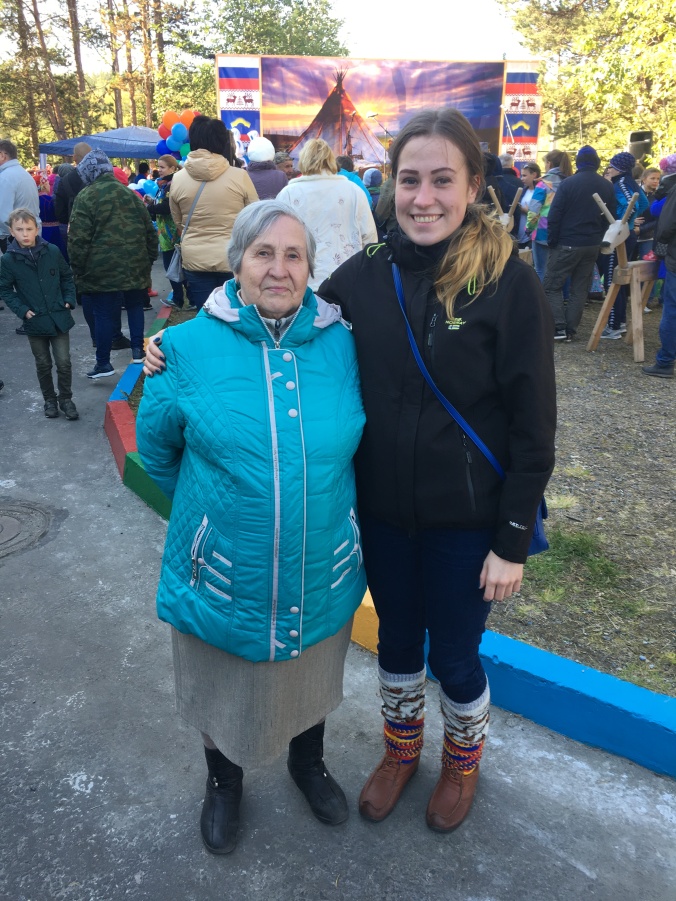
Natalia, and her grandmother Zoya.
Zoya was born in Zapadnaya Litsa on the coast of the Barents Sea but has lived most of her life in Verkhnetulomsk, south of Murmansk. Today, Zapadnaya Litsa is controlled by the Russian military, which means the local population has no access to this area. At the beginning of the twentieth century, most Skolt Sámi emigrated to Finland. However, Zoya’s family remained on the Russian side. According to herself, she is the only person left who knows the five Skolt Sámi dialects of the area. Earlier there were seven Skolt Sámi siidas across what is now Russia, Finland and Norway, where Neiden was the westernmost of these areas.
After meeting Zoya it was time for the big highlight- the Sami football match! It was played only by women, who were all dressed in long skirts. Like most football matches, the objective was to put the ball in the goal, but here the players were allowed to use various dirty tricks, like hiding the ball between their legs or pushing the opponents to the ground. It was whispered that Sami football is played better in Lujávri and that there is some internal rivalization between the games.
In the afternoon, we continued southwards towards Lujávri (Russian: Lovozero). During the Soviet era, many Sami were forcefully relocated here, from their traditional lands in northeastern and northwestern parts of the Kola Peninsula. These areas were practically emptied out to make room for military bases and expansion of infrastructure and industry. Today, about half of the Sami population of Kola live in Lujávri, and about 870 of the town’s 3000 inhabitants are Sami. Therefore, the town is called the Sami capital on the Kola Peninsula.
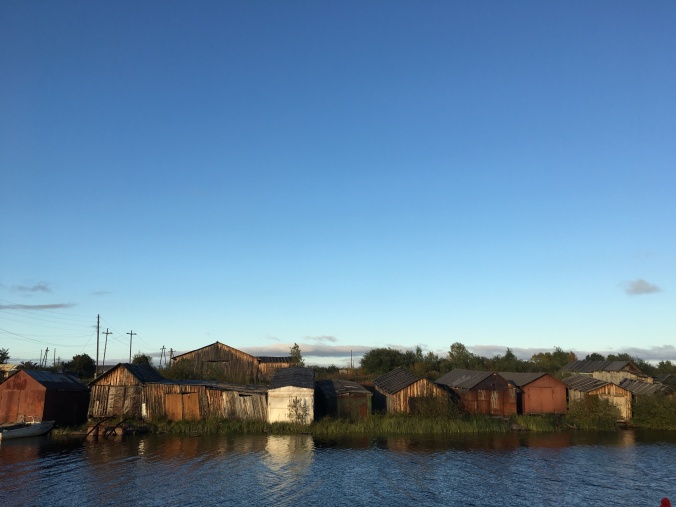
Boat houses in Lujávri.
After a quick stop at the famous duojár Vladimir Chuprov, and at the grocery store to pick up supplies, we drove out to the river where Mikhail was waiting for us. He operates a tourism business in the area and brings people out on the big lakes, by boat in the summer and snowmobiles in the winter. We wrapped ourselves in wool and life jackets and jumped on board the boat. Then Mikhail led us out on the big Lujávri, the second largest lake in Murmansk oblast, past boatsheds and islets, under a fantastic sunset.
About half an hour later we reached our destination, Yulinskaya Calma, a tourist base in the woods. There was a fantastic network of small and large cabins there, coupled by walkways through the heather. We had the main cabin to ourselves, which was incredibly warm and inviting after an icy fresh boat trip! We were served fish soup, reindeer meat and blueberry juice. Mikhail belongs to one of the Komi families in the area and told us about the local reindeer herding and about Seidijávri, Lake Seidi, which was the destination for the following day. We spent the evening making plans for next year´s festival and enjoying eachothers company.
Sunday morning we got up early, ready for today’s great, and perhaps the most sought after, destination – Lake Seidjávri, by some Sami considered the most important sacred site on the Kola peninsula. With Mikhail and his dog Umka as expert leaders, we headed out, first across the lake and then on foot among blueberry bushes and autumn-yellow hardwood trees. Seidjávri is relatively hidden from the larger Lake Lujávri, but is now more accessible and has become a popular tourist destination. However, this has brought on some conflicts between the Sami people and the authorities.
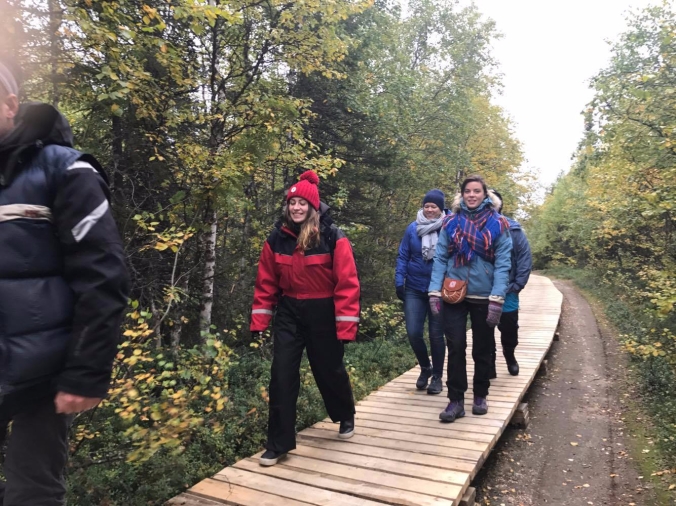
the walk from Lujávri to Seidjávri.
But during our visit, on an early Sunday morning in September, the lake was as peaceful and atmospheric as we had hoped. We jumped on board a new boat and went out. The lake is more green than blue, surrounded by mountains and ridges. It is holy, as the name also implies. Out on the lake lies an island where noids (shamans) were buried in earlier times. You can still see the hollows where Russian archeologists in recent times have done excavations and removed what was there. This is another controversial topic, as attempts at repatriation have not been successful.
We made an attempt at fishing, but without luck. On one of the mountain walls there is a outline of a person with outstretched arms. Apparently, he was a powerful chud who terrorized the Sami in the area. They managed to catch him, but struggled to kill him. The noaidi told them to bring the chud to a sacred place. Thus, the Sami brought him to Seidjávri and trapped him in the mountain, where he still is.
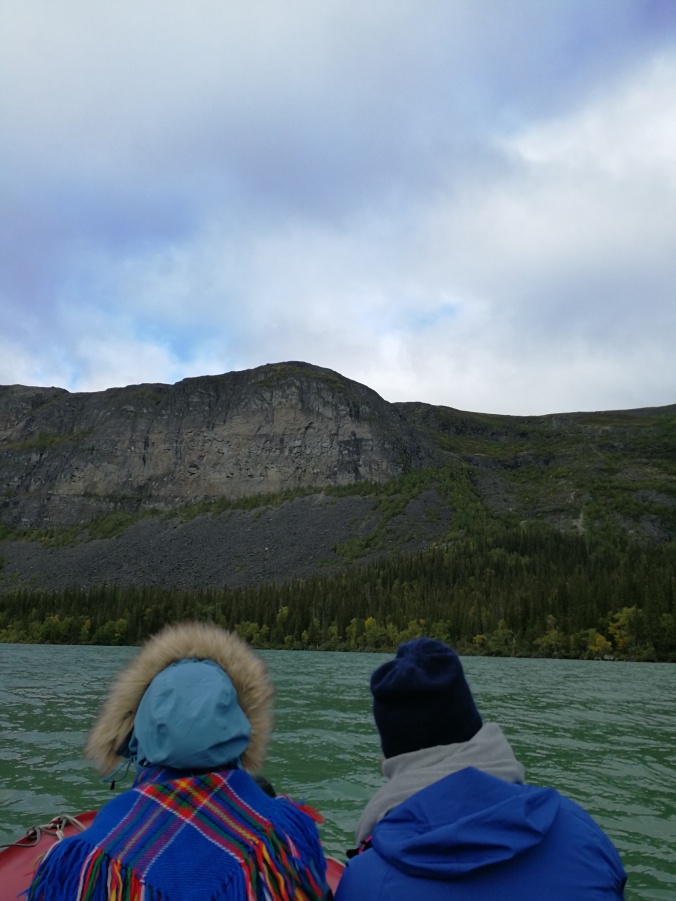
«Can you see the man on the mountain wall?»
A boat-trip, a hike, and another boat trip later, and we were back at the cabin for lunch. Hot fish soup did us well after the cold hours in the boat. Then we packed up, said our goodbyes to both people and animals and headed back to Lujávri. On land again, we thanked Mikhail for the guidance and drove west and then north.
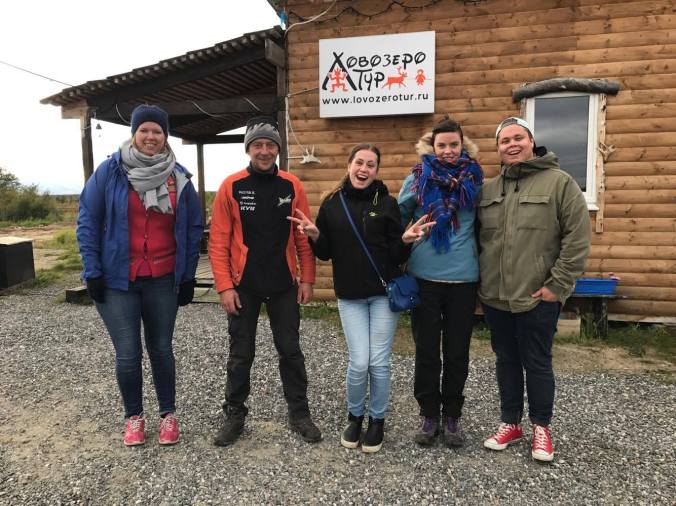
With our great host and guide, Mikhail.
Back in Murmansk we ate dinner together and talked about our experiences over the weekend. We said “so long!” to Natalia and Tatiana, with big plans in mind for a new trip in the spring. Then we went back across the tundra, past military bases and war monuments, through the border and to Kirkenes, and finally back to Tromsø.
Although the trip was small, it made a huge impression. We all got a sense of the Russian side of Sápmi, of important traditions and ways of life, of large and small conflicts, of people and environments. We are excited for the year to come, with the work of choosing the delegation and to present Sami of the Kola Peninsula at Riddu Riđđu 2018.
At the bottom of Seidjávri lies several Russian coins, offered to the lake on Sunday, September 10, 2017. We will return! ❤
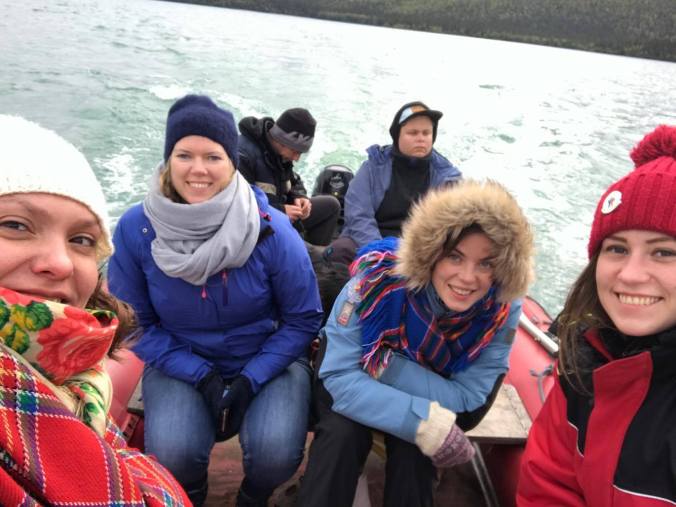
– by Kristin Evju, Riddu Riđđu´s coordinator for the Northern People of the Year program-